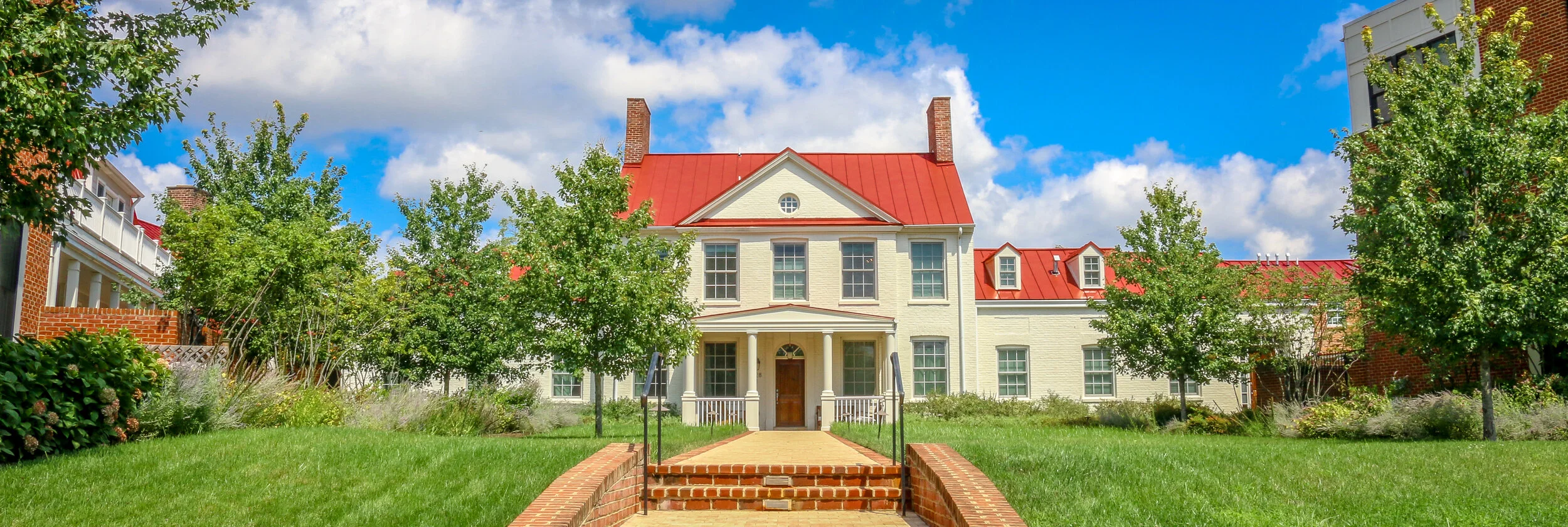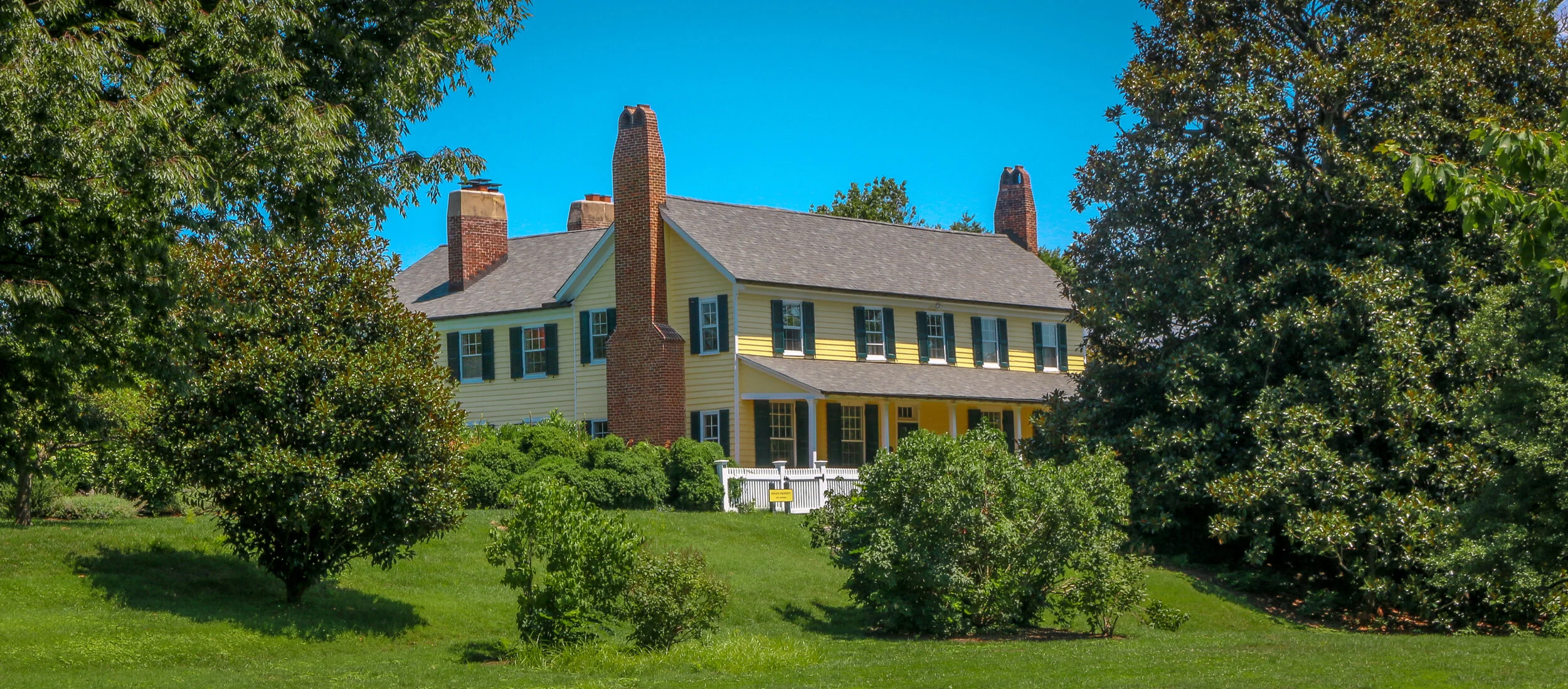The Maples was originally built for Captain William Mayne Duncanson between 1795 and 1796 on property he purchased for $960. The Late Georgian style mansion is the oldest building still standing on Capitol Hill. The two story main house and detached outbuilding which served as slave quarters and a carriage house was designed by architect William Lovering who designed several of the properties I’ve features in this series. During the house’s construction, the captain lived in the Duncanson-Cranch House on N St. SW which was the last property we looked at. George Washington was a dinner guest at The Maples while Duncanson lived there and the president was said to have called it “a fine house in the woods”.
Duncanson’s real estate investments in the city eventually led him into bankruptcy, and he lost this house in the process. It served as a hospital after the Battle of Bladensburg during the War of 1812 and soon thereafter was purchased by recent Star Spangled Banner author and future D.C. District Attorney Francis Scott Key. Interestingly, at the time he purchased The Maples, Key was living at 3518 M St. in Georgetown, a block or so away from the Forrest-Marbury House featured earlier in this series. The Key family likely never lived in The Maples though, except perhaps briefly after selling their Georgetown home in the 1830s.
In 1838 The Maples was purchased by Major Augustus A Nicholson, the Quartermaster of the United States Marine Corps, and became the center of military entertainment in the Capital City. Sadly, Major Nicholson’ wife committed suicide in the house and is said to still haunt the property with her tormented cries…
This post shares photos and a brief history of Rosedale in Cleveland Park in Washington D.C.
The area we now call Cleveland Park was once part of a massive 800 acre estate owned by Colonel Ninian Beall. After Beall’s death in 1717, his property was divided among his 12 children and a tract of it was bought by a man whose name is lost to history. This man built a small stone cottage on the property around 1740 and the estate was known as Pretty Prospects. In 1793, the property was acquired by General Uriah Forrest, who had been the mayor of Georgetown and was at that time serving in the U.S. House of Representatives. Forrest had a large wood-framed house built onto the front of the stone cottage and renamed the property Rosedale. Rosedale was the Forrest family’s country estate which they built while living in the Forrest-Marbury House in Georgetown (read about that house HERE).
General Forrest was a prominent citizen of early Washington D.C. and Rosedale played host to many important people including President John Adams. Forrest himself would die in the front parlor of the house in 1805. Rosedale remained in the family until 1917 when it was rented by the Coonley family.
St. Francisville, Louisiana may be small, but it sure packs a big punch. This beautiful Southern town got its start way back in 1809. It was built on a hill overlooking the older French settlement of Bayou Sara, which was at one time the largest port on the Mississippi River between New Orleans and Memphis. For 74 days back in 1810, St. Francisville served as the capital city of the independent Republic of West Florida when it ousted its Spanish occupants before being annexed by the United States. In the years leading up to the Civil War, St. Francisville was the supply center and main town for surrounding plantations, perfectly situated for trade on a bluff high above the river. Today it contains a fascinating collection of antebellum, creole and Victorian homes, and some beautiful churches and businesses as well. I spent a lovely afternoon there, wandering the quiet streets and taking these photos. The few people I met on my stroll were remarkably pleasant and kept pointing me towards even more beautiful parts of town for me to shoot. The river has been high this year, and you’ll see a few photos at the end of the flooding in the area. St. Francisville is a wonderful escape from the big cities and offers a magical combination of small-town charm, fascinating history and delightful people. You should definitely put it on your list!
Hello everyone, and thank you for stopping by. The flowers are coming in nicely here in East Louisana, but the weather has cooled off significantly as well. I’ve been enjoying the little cold snap though, and sleeping really well cozy-ed up in the back of my van. I had an interesting stop in Alexandria this week, a town which has definitely seen better days, but which isn’t dead yet. From there I headed back into Cajun Country for the weekend, enjoying great food, drink, music and company. I stopped off in Lafayette to get some work done and have cruised across the north of the eastern panhandle to the North Shore where I am writing to you from today. It’s been a fun week as I start to make my preparations for my departure from Louisiana. It’s always sad to go, but it’s almost time I moved on. HERE is the link to this week’s map if you like to follow along as I go.
When I left you last week, I made my way south along the Mississippi River levee, and found the river is really high. It was definitely higher than the road in a lot of places, and while the levee was doing what it was built to do, it’s still a little bit nerve racking to be driving below the water line. I stopped in a few places to just look out at the river as it flowed past. I made the turn northwest when I hit Louisiana Route 1 and headed on to Mansura for a stop at Juneau’s Cajun Meat Market. This is a spot recommended by a friend as having the best boudin (Cajun pork and rice sausage) in Louisiana, so I had to stop in and give it a go. This was a real butcher shop with all kinds of beautiful fresh meat on display - if I had a proper refrigerator I would have probably spent a fortune there. Unfortunately, I don’t, so I settled for some boudin, a fried boudin ball, and a boudin and pepperjack cheese wrap. All three were amazing and while they didn’t help my cholesterol, they were well worth the stop.





